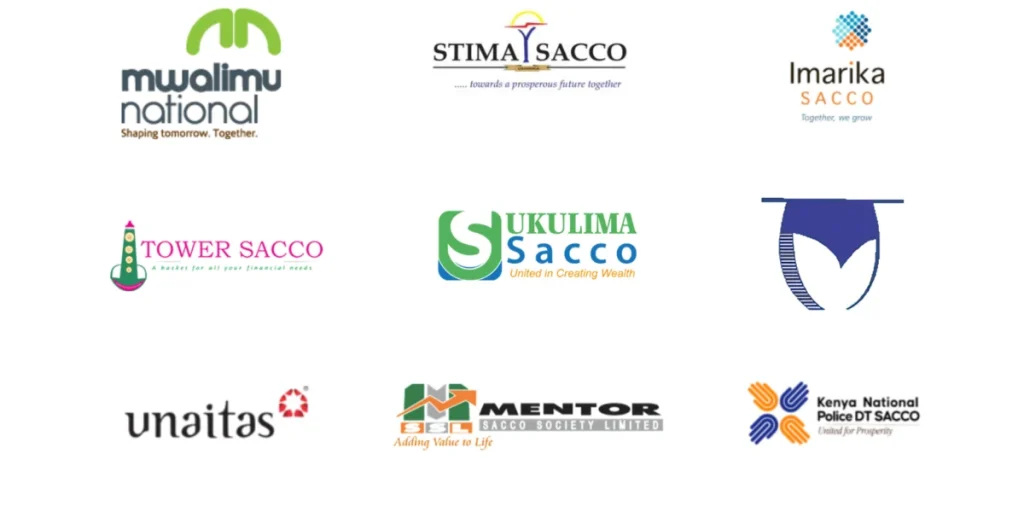Savings and Credit Cooperative Societies (Saccos) play a pivotal role in Kenya’s financial ecosystem. They have empowered millions of Kenyans to save, access affordable credit, and achieve financial stability. Whether you’re a young professional, a farmer, or an entrepreneur, understanding Saccos can help you unlock new financial opportunities. This guide provides a detailed look at how Saccos work, their benefits, risks, and how you can get started.

What Are Saccos?
Saccos are member-owned financial institutions that provide savings and credit services to their members. Unlike banks, Saccos are designed to cater to the financial needs of their members by pooling resources and providing affordable financial solutions. In Kenya, Saccos are governed by the Sacco Societies Regulatory Authority (SASRA).
Saccos are particularly popular in Kenya because they foster a sense of community and financial inclusion, enabling members to save consistently and access affordable loans.
Types of Saccos in Kenya
Kenya has a diverse range of Saccos tailored to different sectors and financial needs. The most common types include:
a. Employee-Based Saccos
These Saccos serve members employed in specific sectors. For example:
- Mwalimu National Sacco: Serving teachers and education sector employees.
- Unaitas Sacco: Originally a farmers’ Sacco, now open to a wider membership.
- Stima Sacco: Primarily for employees in the energy sector but also open to others.
b. Community-Based Saccos
These are formed by members of a specific community or region. For instance:
- Waumini Sacco for members of the Catholic Church.
c. Housing Saccos
These Saccos focus on helping members save for and finance home purchases or construction. Examples include:
- Nyati Sacco and Safaricom Sacco housing schemes.
d. Agricultural Saccos
These support farmers by providing credit and savings plans tailored to agricultural cycles. Examples include:
- Kimisitu and Imarika Sacco.
By joining a Sacco aligned with your profession or needs, you can enjoy customized financial services.
How Saccos Work
Saccos operate on the principle of collective savings and borrowing. Here’s how they typically function:
Membership Requirements
To join a Sacco, you need to:
- Purchase a minimum number of shares.
- Pay a membership fee.
- Commit to making monthly savings.
Savings
Members contribute regularly to their savings accounts. These contributions form the pool from which loans are issued.
Loans and Guarantors
Members can borrow up to 3-4 times their savings, depending on the Sacco’s policies. Loans require guarantors who are fellow members to co-sign loans, ensuring collective responsibility.
Dividends and Rebates
At the end of the financial year, profits are distributed to members as dividends (on shares) or rebates (on savings).
Example:
Jane, a teacher, joined Mwalimu National Sacco. Over two years, she saved Ksh 50,000. She borrowed Ksh 150,000 to start a side business, with her colleagues acting as guarantors. At year-end, she received Ksh 5,000 in dividends from her shares.
Benefits of Joining a Sacco
Saccos offer several advantages, making them a preferred choice for many Kenyans:
a. Affordable Loans
Sacco loans have lower interest rates and flexible repayment terms compared to banks. For example, the interest rate on a Stima Sacco loan is often 12% per annum on a reducing balance, much lower than many commercial banks averaging 16%.
b. Encourages Savings
Monthly contributions instill a disciplined savings culture.
c. Dividend Income
Members earn annual dividends based on their shares, providing a passive income stream.
d. Financial Inclusion
Saccos make financial services accessible, especially to low-income earners and rural communities.
e. Community Support
Saccos foster a sense of belonging and mutual assistance among members.
Risks and Challenges of Saccos
While Saccos offer numerous benefits, they also come with potential risks:
a. Mismanagement
Poor governance can lead to embezzlement or collapse. For example, the collapse of Ekeza Sacco due to alleged financial mismanagement highlighted the need for regulatory oversight.
b. Loan Defaults
If borrowers fail to repay, guarantors bear the responsibility, which can strain relationships.
c. Withdrawal Restrictions
Some Saccos have strict rules about when and how members can withdraw their savings.
d. Fraud
Unscrupulous individuals may set up fake Saccos to defraud members.
How to Mitigate Risks:
- Conduct due diligence before joining a Sacco.
- Choose Saccos regulated by SASRA.
- Actively participate in annual general meetings (AGMs).
How to Choose the Right Sacco for You
Selecting the right Sacco is crucial to maximizing benefits. Here are factors to consider:
a. Reputation and History
Research the Sacco’s track record. For example, Unaitas Sacco has consistently maintained a strong reputation for member satisfaction. Also, Mwalimu National Sacco is renowned for reliability.
b. Financial Performance
Review the Sacco’s dividend payout history and interest rates.
c. Loan Policies
Compare loan limits, interest rates, and repayment terms across Saccos.
d. Dividend History
Choose Saccos with a consistent history of paying dividends.
e. Accessibility
Opt for Saccos that offer digital platforms for convenience, such as mobile apps or USSD services.
Red Flags to Watch Out For:
- Lack of transparency in operations.
- Poor communication with members.
- Frequent delays in loan disbursement or dividend payouts.
How to Join and Maximize Your Membership
Joining a Sacco is straightforward. Here’s a step-by-step process:
a. Joining Process
- Identify a Sacco that aligns with your financial goals.
- Visit the Sacco’s office or website to register.
- Submit the necessary documentation, such as ID, KRA PIN, and proof of income.
- Purchase the required shares and pay the membership fee.
- Set up a savings plan.
b. Tips for Maximizing Membership Benefits
- Save consistently to qualify for higher loan amounts and avoid withdrawing savings unnecessarily.
- Attend Annual General Meetings (AGMs) to stay informed and participate in decision-making.
- Leverage Sacco loans for productive investments, such as expanding a business or buying property.
- Use dividends wisely by reinvesting them or paying off loans.
- Network with other members to explore business opportunities.
Example:
David, a small business owner, joined Unaitas Sacco. By attending AGMs, he learned about business loans and expanded his venture using a Ksh 200,000 loan. His active participation also earned him valuable connections with other entrepreneurs.
Final Thoughts
Saccos in Kenya are more than just financial institutions; they are vehicles for wealth creation and community development. By understanding how Saccos work, choosing the right one, and actively participating, you can unlock numerous financial opportunities. Whether you’re a salaried employee, a farmer, or a small business owner, a Sacco can help you achieve your financial goals.
Are you ready to take charge of your finances? Start by exploring Saccos near you and share this guide with others who may benefit!
Discover more from The Finlite Journal
Subscribe to get the latest posts sent to your email.


6 Responses
Good web site! I really love how it is easy on my eyes and the data are well written. I am wondering how I might be notified when a new post has been made. I’ve subscribed to your feed which must do the trick! Have a nice day!
Thank you for providing me with these article examples. May I ask you a question?
I’d like to find out more? I’d love to find out more details.
Please provide me with more details on the topic
Thanks for your help and for writing this post. It’s been great.
Your articles are very helpful to me. May I request more information?